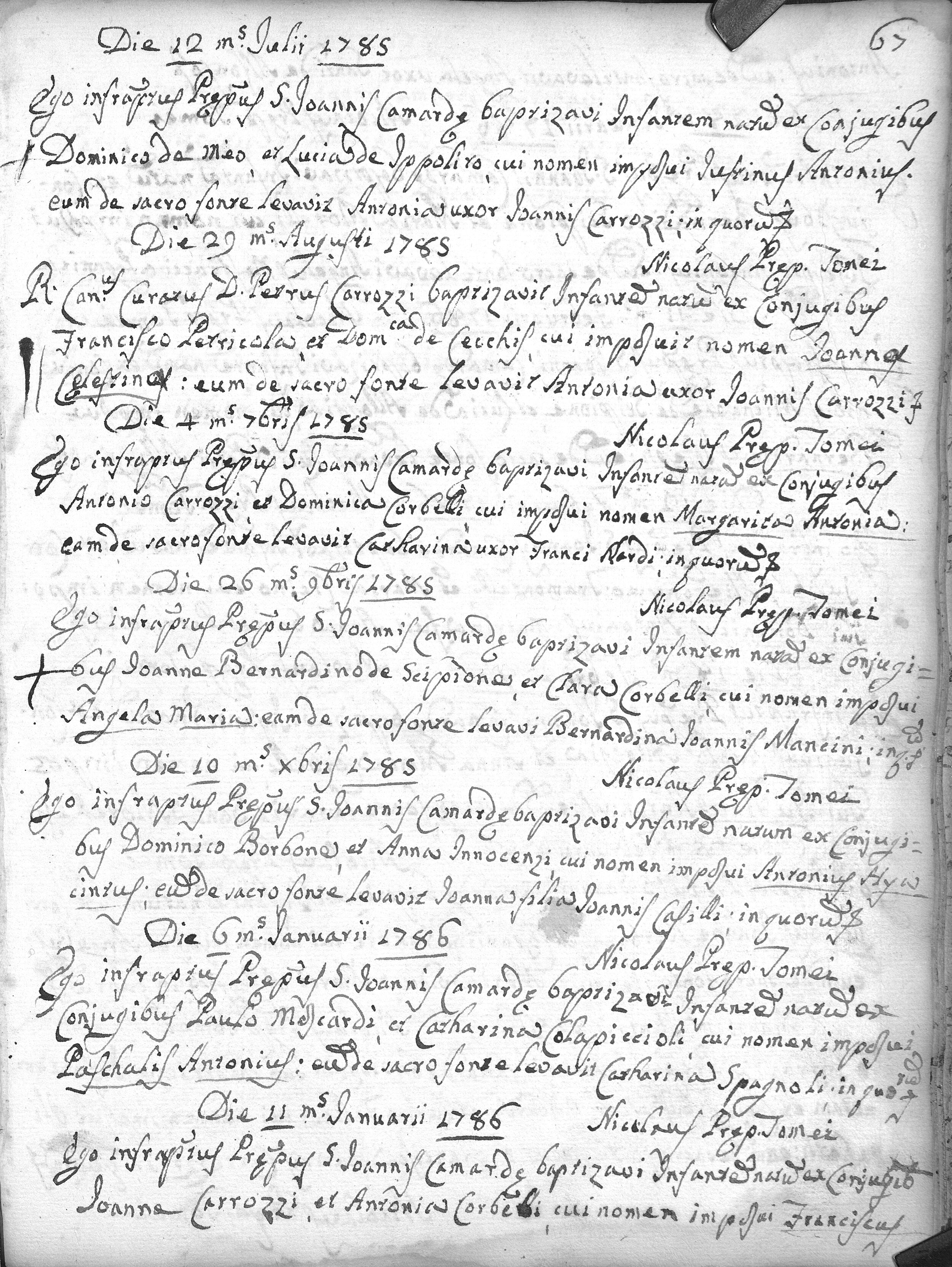How to Find Italian Vital Records on FamilySearch
If you’re Italian American, FamilySearch is a great place to find free genealogy records.
The only catch is some of the collections are a tiny bit tricky to find on the site and not where you’d expect them.
In this post, I’ll share what types of records you can find and how to find them.
Italian genealogy resources on FamilySearch
Most of FamilySearch’s digitized Italian resources are civil registration records, organized by region. These are government-created vital records, also known as registri dello stato civile. They include birth, death, and marriage records.
These are organized by province. These provinces began to keep civil records at different times, beginning in 1809 in southern Italy through 1866 in central and northern Italy. Within each province, the collections can be subdivided by comune (towns).
FamilySearch also has indexes to births, marriages, and deaths from about 1809 to 1900, and Evangelical and Catholic church records. This post focuses on the civil registration records, since that’s mostly what’s available.
If you’re not familiar with FamilySearch, you do need to create account, but it’s free.
Types of Italian civil registration records
There are several types of registri dello stato civile on FamilySearch.
Nati are birth records. These have the names of the child and parents, the birthdate, and gender. The parents’ occupations and their residence, and the mother’s maiden name are also usually included. Baptism information may also be on them.
Matrimoni are marriage records and have the date and time of the wedding, plus the bride and groom’s ages, occupations, birthplace, addresses, and parents’ names. The names, ages, and jobs of witnesses were also included. In the case of immigrants, their country of birth was noted. It could also be mentioned if the bride and groom were Jewish. [This could be the case with other religions, but I haven’t come across any in my research.]
Morti record deaths. These have the name, age, where born, occupation, and where they lived. Parents’ names, ages, residences, and jobs were also included. The informant’s name, age, job, and residence were also noted.
Pubblicazioni are marriage banns, which record the intent to marry. They have the dates the banns were posted, the names, occupations, and residences of the bride and groom and their parents, and the mother’s maiden name. Witnesses may also be given. They could also note what documents they gave in support of the marriage.
Allegati are supporting documents and you can find them for different events, mostly marriages. For marriages, allegati are the legally required documents like birth certificates.
Cittadinanza are citizenship records. These are available in some regions. They state what country the person was from and how long they lived in Italy.
Indici decennali are 10-year indexes and have the event date and registration number. When and where the person was born, and their parents’ names might also be listed.
The years and types of records available vary with the place.
How to access the records
There are a couple of ways to access the Italian vital records.
But first, I want to point out that not all have been fully indexed, so searching by name and where they lived may not come up with your ancestor. You’ll have to browse the images in that case. Some collections are image only.
1) The Records method. The first way to find records is pretty straightforward and you may have done this type of search before if you’re already a FamilySearch user.
Go to Search, then Records, then Research by Location.
You can enter Italy in the "collection title" search box, or you can click on Europe on the map and select Italy and a page with all the collections will come up.
With either, choose the province you’re looking for. Options to narrow down by commune and/or year may come up.
2) The Catalog method. Don’t see the place where your ancestor was from? Now comes the slightly roundabout way to search.
For some reason, not all the Italian records are in the Records part of FamilySearch. Some provinces – Milan, Novara, Monza and Brianza, Latina, and Piacenza – are only in the Catalog.
To get to these, go to Search, then Catalog.
In the place search field, enter “Italy,” and the region. Under availability, click the button for online records. On the list of results that comes up, select the option for Civil Registration to expand the list (the little arrow).
They’ll be called Registri dello stato civile di [place], or similar. Click the link and you’ll find some combination of birth, marriage, and death record collections by years. Indici, cittadinanza, and allegati collections may also be available.
Note that some Italian records are available only in family history centers. Any collections that have a camera icon with a key above it are not viewable from home. I’ve also found that some of the state archive collections weren’t viewable at the time of writing this even though they had a camera icon.
You may also like
11 of the best websites for free passenger lists
Everything you need to know about using home sources




